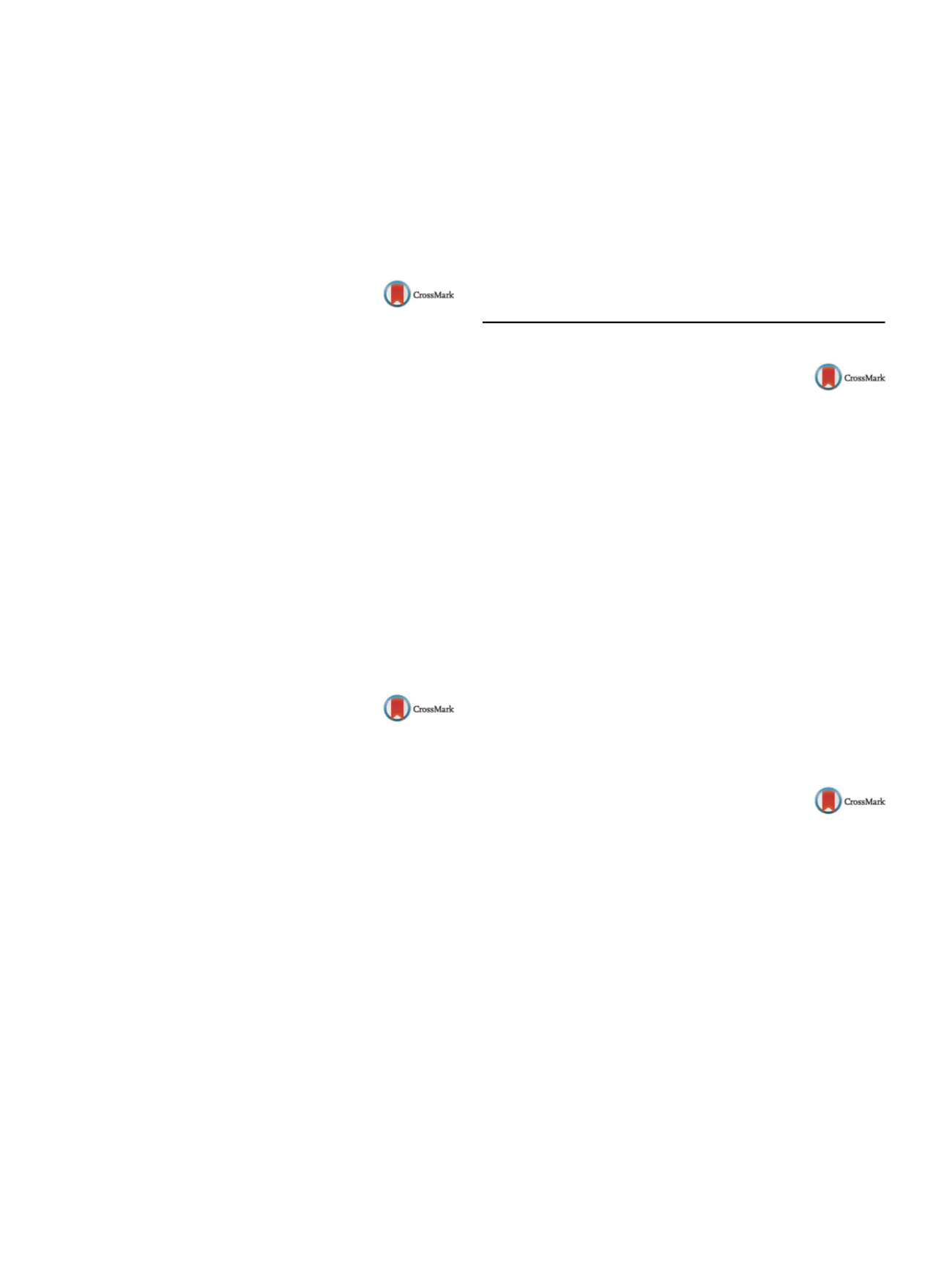

S34
25th European Congress of Psychiatry / European Psychiatry 41S (2017) S8–S52
and tDCS in neuropsychiatric patients and healthy subjects have
found promising results.
By combining neuroimaging and NIBS new functional models can
be developed and compared in different health and pathology
states, e.g. in the development of any given psychiatric disorder.
Disclosure of interest
Supported by the Federal Ministry
of Research and Education (“Forschungsnetz für psychische
Erkrankungen”, German Center for Brain Stimulation–GCBS–WP5).
http://dx.doi.org/10.1016/j.eurpsy.2017.01.159S086
Cognitive enhancement in young
healthy subjects using non-invasive
brain stimulation and cognitive
training
A.K. Brem
Munich, Germany
Transcranial electrical stimulation (tES) is being widely investi-
gated to understand and modulate human brain function. The
interest in using tES to enhance cognitive abilities not only in
patient populations but also in healthy individuals has grown in
recent years. Specifically in combination with cognitive training
tES has shown success in enhancing cognition. However, to date,
we still know little about the impact of interindividual differences
on intervention outcomes. A variety of tES techniques and their
effects in combination with cognitive training, interactive effects of
tES with baseline cognitive abilities and neurophysiological traits
will be presented and following ramifications with regards to the
development of individualised stimulation protocols will be dis-
cussed.
Disclosure of interest
The author has not supplied his declaration
of competing interest.
http://dx.doi.org/10.1016/j.eurpsy.2017.01.160S087
Corticospinal excitability predicts
antidepressant response to rTMS
A. Oliveira-Maia
1 ,∗
, D. Press
2, A. Pascual-Leone
21
Champalimaud Clinical Centre, Champalimaud Centre for the
Unknown, Neuropsychiatry Unit, Lisbon, Portugal
2
Beth Israel Deaconess Medical Center-Harvard Medical School,
Berenson-Allen Center for Non-invasive Brain Stimulation, Division of
Cognitive Neurology, Department of Neurology, Boston, USA
∗
Corresponding author.
Repetitive transcranial magnetic stimulation (rTMS) targeting the
left dorsolateral prefrontal cortex (DLPFC) is a treatment option
for patients with medication-resistant major depressive disorder
(MDD). However, antidepressant response is variable and there
are currently no response predictors with sufficient accuracy for
clinical use. Here we report on results of an observational open-
label study to determine whether the modulatory effect of 10Hz
motor cortex (MC) rTMS is predictive of the antidepressant effect
of 10Hz DLPFC rTMS. Fifty-one medication-resistant MDD patients
were enrolled for a 10-day treatment course of DLPFC rTMS and
antidepressant response was assessed according to post-treatment
reduction of the 17-item Hamilton Rating Scale for Depression
score. Prior to treatment, we assessed the modulation of motor
evoked potential (MEP) amplitude by MC rTMS. We measured
MEP’s to single pulse TMS using surface electromyography, before
and afterMC rTMS, and calculatedMEPmodulation as the change of
meanMEP amplitude after MC rTMS. MEP modulation proved to be
a robust predictor of reduction of clinician-rated depression sever-
ity following the course of DLPFC rTMS: larger MC rTMS-induced
increase of corticospinal excitability anticipated a better antide-
pressant response. These findings suggest that MC rTMS-induced
modulation of corticospinal excitability warrants further evalua-
tion as a potential predictive biomarker of antidepressant response
to left DLPFC 10Hz rTMS, and could inform future developments of
rTMS to treat depression.
Disclosure of interest
The authors have not supplied their decla-
ration of competing interest.
http://dx.doi.org/10.1016/j.eurpsy.2017.01.161Symposium: Staging of psychiatric disorders:
Integrating neurobiological findings
S088
Staging in bipolar disorder: Clinical,
biochemical, and functional correlates
I. Grande
Hospital Clinic de Barcelona, Barcelona, Spain
In the field of bipolar disorder, some proposals of a staging
model have been suggested considering the progressive features
of the disorder. The staging model regards special features of
the patients and further draws a route to define the progno-
sis and treatment as well as the neurobiological background of
the disorder. The aim of this model is to identify rational ther-
apeutic targets and provide the most effective and less toxic
intervention in a time-sensitive manner. Advocating for a model
of staging in bipolar disorder that can group the patients accord-
ing to quantitative cut-offs of common practice clinical variables
as well as defining a biochemical correlation seems to be a further
step towards an operative and valid model of staging in bipolar
disorder.
Disclosure of interest
Dr. I. Grande has received a Juan Rodés Con-
tract (JR15/00012), Instituto de Salud Carlos III, Spanish Ministry of
Economy and Competiveness, Barcelona, Spain and has served as a
consultant for Ferrer and as a speaker for AstraZeneca, Ferrer and
Janssen-Cilag.
http://dx.doi.org/10.1016/j.eurpsy.2017.01.162S089
Staging & profiling in addiction, can
we cross the gap from bench to
bedside?
A. Schellekens
Nijmegen, The Netherlands
Addictive behaviours are highly common (prevalence worldwide
about 10%), with major impact on the individual and society (con-
tributing to 5% of overall DALYs and mortality)
[1,2] .Though a
number of evidence-based treatments are available, relapse rates
remain high, up to 50%within one year of treatment
[3,4] . Staging of
addictive behaviors might contribute to improve this prognosis by
indicating which patient could benefit most fromwhich treatment
modality.
In DSM-5 clinical staging of addictive disorders is limited to grading
the severity of the disorder, based on criterion counts
[5] .How-
ever, addictive disorders are highly heterogeneous, with distinct
clinical profiles and neurobiological underpinnings of the disorder.
Reward-processing deficits are considered a hallmark of addiction.
Several additional neurobiological deficits have been identified in
addicted individuals, such as dysfunction of brain stress systems,
anterior cingulate cortex and habenula.
These neurobiological deficits may identify clinical subgroups of
patients with distinct pathophysiology (profiling), or be related to
progression of the disorder (staging). This presentation will focus


















